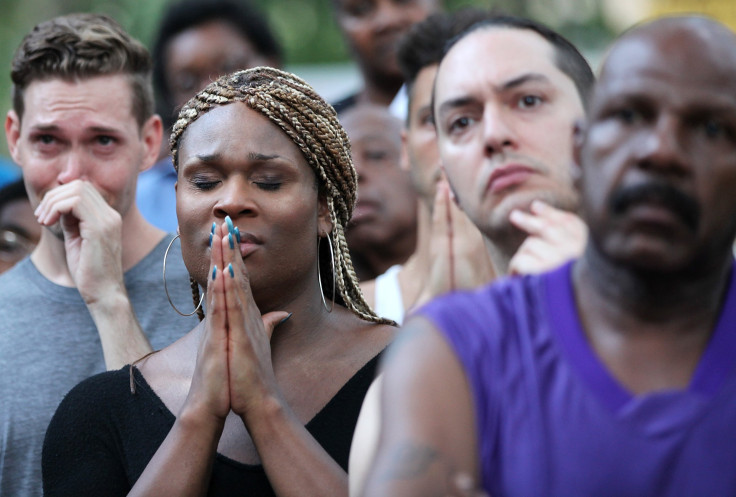American Views Of LGBT People 2016: Public Displays Of Gay Affection More Accepted, But Little Else Has Changed

It’s been six months since the U.S. Supreme Court handed a historic marriage victory to lesbian, gay, bisexual and transgender people, but the straight American majority remains somewhat complacent or ambivalent about overall equality for gays, a new survey stated Wednesday. Americans are becoming more accepting, however, of LGBT public displays of affection, of family members that are gay and of attending church with someone who isn’t straight, according to the survey conducted by Glaad.
This is the second annual survey of American views on the gay community done by Glaad, the nation's largest LGBT media advocacy organization. It comes at a time when gay, lesbian and transgender advocates are pressuring governments to enact anti-discrimination protections for LGBT people in the workplace and in some public accommodations. Currently, only some states and localities have such protections, since there is no federal nondiscrimination law. And conservatives, claiming the support of a majority of Americans, have been trying to weaken protections in the name of religious freedom.
“Complacency is the enemy of social progress,” Sarah Kate Ellis, president and CEO of Glaad, said in a statement released with the survey. “2015 was a monumental year for the LGBT community, but marriage equality is a benchmark — not a finish line. The hard work of legislative change must go hand in hand with that which cannot be decided in a courtroom: changing hearts and minds.”
Glaad’s “Accelerating Acceptance” report shows that Americans are growing more comfortable with seeing a same-sex couple holding hands in public. Rather, 29 percent said they were very uncomfortable or somewhat uncomfortable with gay PDAs in 2015, down from 36 percent who said the same in 2014. Straight people were also marginally more comfortable with learning that a family member is gay or that their doctor is gay.
But they were nearly just as uncomfortable in 2015 with seeing an LGBT co-workers’ wedding pictures, learning that their child’s teacher is gay and having their child taught about LGBT history as they were in 2014, according to the survey. And these markers weren’t as troubling as non-LGBT Americans’ views on the continued fight for rights and equality, advocates have said.
The polls finds that half of straight Americans surveyed said LGBT people already had the same rights as everyone else, a “false and potentially dangerous impression,” Glaad said. As much as a third of the non-LGBT respondents don’t see violence against transgender people or homelessness among LGBT youth as large problems, the survey found.
Glaad’s 2015 and 2014 surveys were conducted with the help of the polling firm Harris Pool. The 2015 poll was conducted online, Oct. 5 through Oct. 7, among 2,032 adults ages 18 and older. Non-LGBT people were roughly 87 percent those surveyed. No margin of error was given since is the survey was "not based on a probability sample."
© Copyright IBTimes 2024. All rights reserved.






















